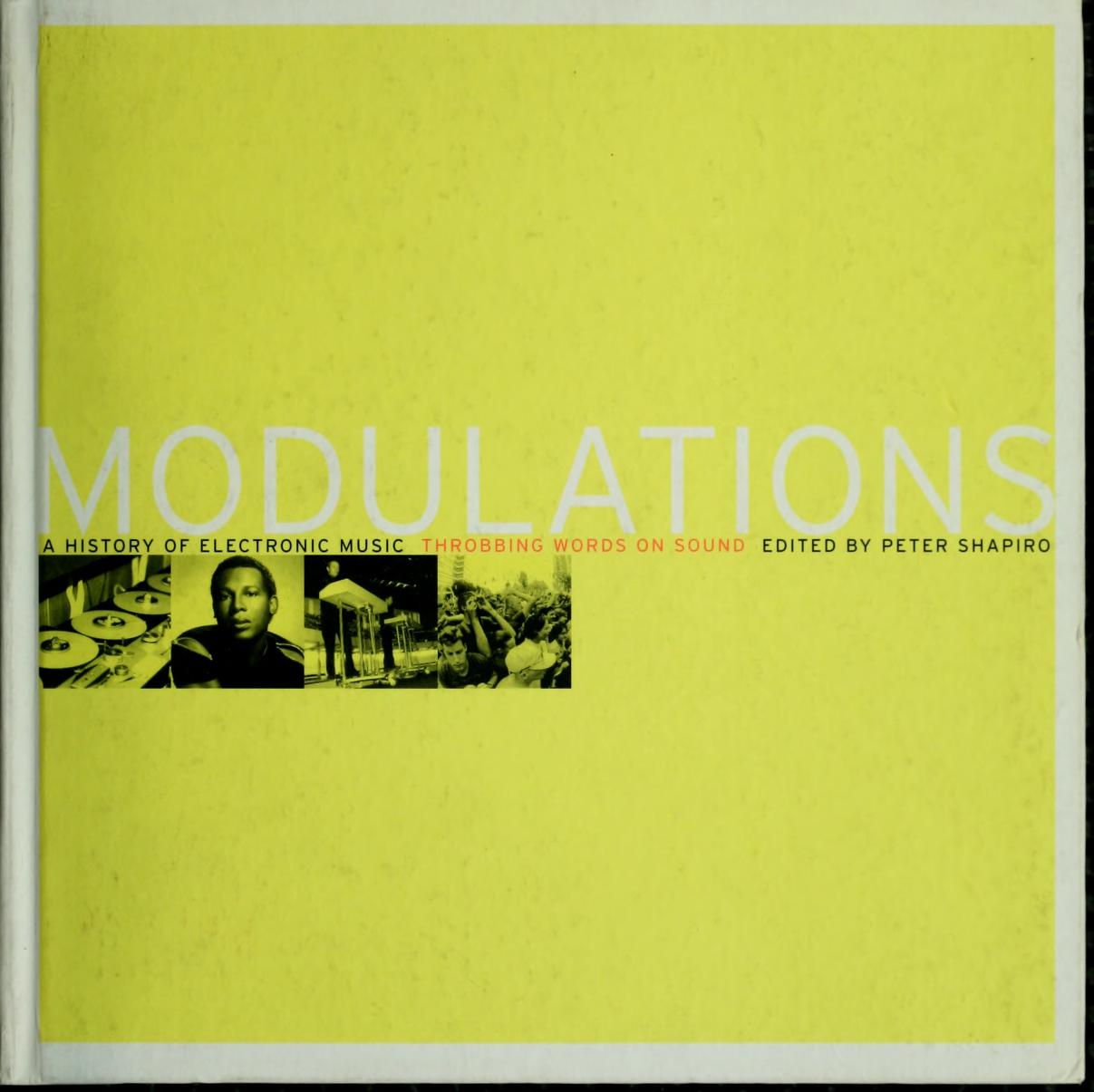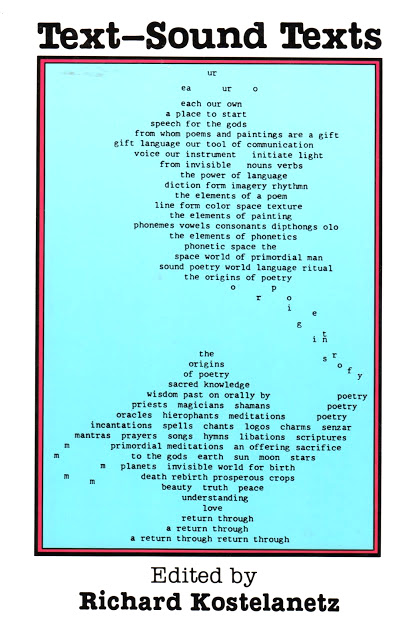Peter Shapiro (ed.): Modulations: A History of Electronic Music: Throbbing Words on Sound (2000)
Filed under book | Tags: · electronic music, hip hop, krautrock, music, music history, sound synthesis, technology

Modulations contains several large essays written by music critics and musicians that provide historical and critical survey of electronic music by genre, discussing labels, sub-genres, stylistic developments, musicians, and records.
Chapters by Rob Young (Pioneers), Simon Reynolds (Krautrock), Peter Shapiro (Disco, Post Punk), Kodwo Eshun (House), David Toop (Hip-Hop), Mike Rubin (Techno), Chris Sharp (Jungle), Tony Marcus (Ambient), Kurt Reighley (Downtempo), and Michael Berk (Technology).
Project director: Iara Lee
Publisher Caipirinha Productions, New York, 2000
ISBN 189102406X, 9781891024061
255 pages
Film reviews: Stephen Holden (NYT, 1998), Tony Ramos (Hyperreal, n.d.).
PDF (39 MB, no OCR)
See also film documentary, dir. Iara Lee, 1998, 75 min.
Richard Kostelanetz (ed.): Text–Sound Texts (1980)
Filed under book | Tags: · avant-garde, composition, concrete poetry, language, performance, poetry, sound poetry

Anthology of scores, scripts, instructions, diagrams and documentation of art works that are meant to be heard. With more than one hundred pieces from a broad range of the 1960’s and 1970’s experimental artists from the music, art, literature, theater, and film worlds, including: John Cage, Guy de Coinet, Else von Freytag-Loringhoven, Allen Ginsberg, John Giorno, Philip Glass, Glenn Gould, Dick Higgins, Jack Kerouac, Annea Lockwood, Alvin Lucier, Jackson Mac Low, bp Nichol, Claes Oldenburg, Mary Ellen Solt, Gertrude Stein, Emmett Williams, and Robert Wilson, among others.
Publisher William Morrow, New York, 1980
ISBN 0688036163, 9780688036164
441 pages, 23.5 x 16 cm
PDF (100 MB)
Comment (0)Jennifer Gabrys: Program Earth: Environmental Sensing Technology and the Making of a Computational Planet (2016)
Filed under book | Tags: · citizenship, city, climate crisis, computation, data, earth, ecology, environment, experience, individuation, participation, sensors, technology, urbanism

“Sensors are everywhere. Small, flexible, economical, and computationally powerful, they operate ubiquitously in environments. They compile massive amounts of data, including information about air, water, and climate. Never before has such a volume of environmental data been so broadly collected or so widely available.
Grappling with the consequences of wiring our world, Program Earth examines how sensor technologies are programming our environments. As Jennifer Gabrys points out, sensors do not merely record information about an environment. Rather, they generate new environments and environmental relations. At the same time, they give a voice to the entities they monitor: to animals, plants, people, and inanimate objects. This book looks at the ways in which sensors converge with environments to map ecological processes, to track the migration of animals, to check pollutants, to facilitate citizen participation, and to program infrastructure. Through discussing particular instances where sensors are deployed for environmental study and citizen engagement across three areas of environmental sensing, from wild sensing to pollution sensing and urban sensing, Program Earth asks how sensor technologies specifically contribute to new environmental conditions. What are the implications for wiring up environments? How do sensor applications not only program environments, but also program the sorts of citizens and collectives we might become?
Program Earth suggests that the sensor-based monitoring of Earth offers the prospect of making new environments not simply as an extension of the human but rather as new “technogeographies” that connect technology, nature, and people.”
Publisher University of Minnesota Press, 2016
Electronic Mediations series, 49
ISBN 9780816693122, 0816693129
x+357 pages
via publisher
Reviews: Etienne S. Benson (Am J Sociology, 2017), Matthew W. Wilson (Cultural Geographies, 2017).
Interviews: Rorotoko (2016), Ulrik Ekman (Computational Culture, 2017).
Author (with links to related articles)
Publisher
WorldCat
PDF (6 MB)
Comment (0)
